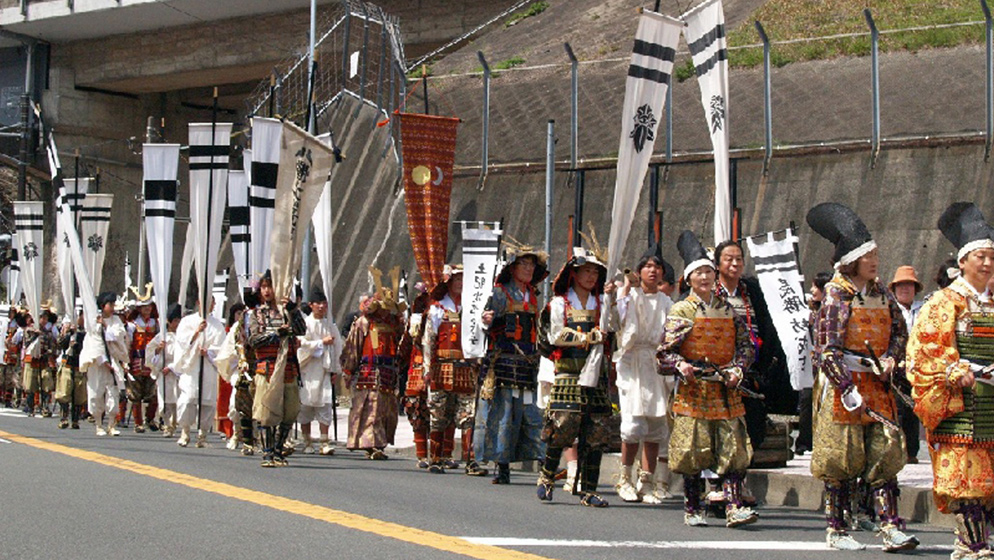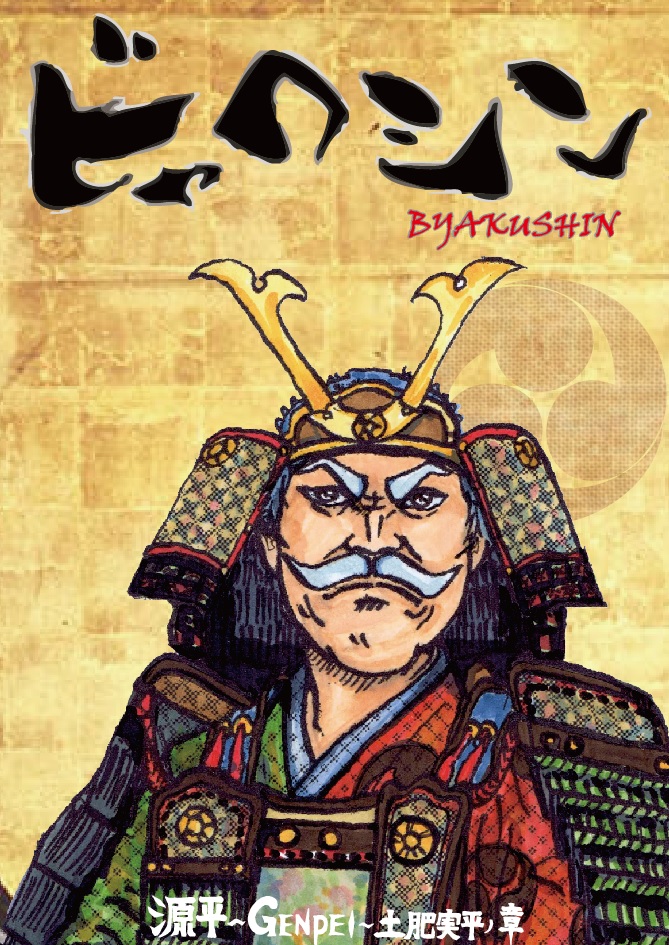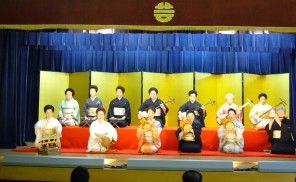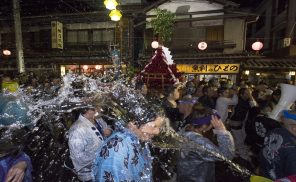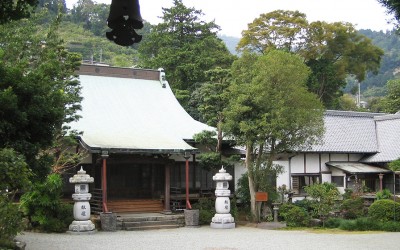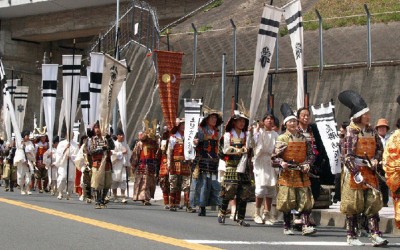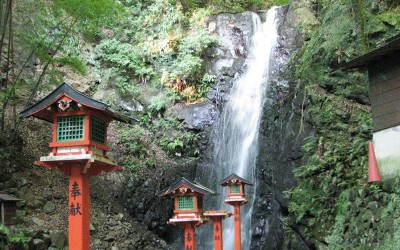The Doi Festival & Warriors’ Parade
This festival, featuring a parade of costumed warriors, is reminiscent of and celebrates Yugawara’s ancient history.
Warriors’ Parade, in memory of Minamoto no Yoritomo’s army
This procession is held in memory of the days when Sanehira Doi, the head of a powerful local clan and one of “Kanto’s Great Eight,” ruled over his domain in Yugawara (called Doi-go at the time), including the area around Odawara. His clan owned a manor about 830 years ago, at the end of the Heian era (794-1185).
On August 17, 1180, when Minamoto no Yoritomo raised an army in Hirugakojima, Sanehira commanded that army, followed by his whole family. He supervised the strategy, the weapons, and the battles, with help from the Hojo clan of Nirayama.
The area around Yugawara Station used to be the site of the Doi family’s palace, and Joganji Temple (300 meters from the back of the station) was their private Buddha statue hall.
After assembling forces in Izu, Yoritomo and Sanehira worked out their strategies in this palace to head for Kamakura, made war preparations, and headed out for battle in Ishibashiyama, with Yoritomo’s approximately 300 warriors on horseback.
Unfortunately, outnumbered by the enemy, Yoritomo’s army lost the first battle between the Minamoto and Taira clans, and was forced to retreat to Sugiyama in the Doi family’s domain.
With the help of Sanehira’s unflinching bravery, strategic maneuvers, and keen discretion and foresight, Yoritomo hid in Sugiyama, Doi-go, and escaped from Manazuru by sea.
Just four months later, Yoritomo forged a much larger army of 30,000, and established the shogunate in Kamakura. At that time, Sanehira was 73 years old, whereas Yoritomo was 35. Despite his age, Sanehira boasted incredible power.
Those ten days spent in Doi-go were the catalyst that led to the birth of the Japanese feudal government. They are referred to in Japanese history as “a time when history was altered,” and Yoritomo’s government was succeeded without pause by those of Oda Nobunaga, Toyotomi Hideyoshi, and the Tokugawa Shogunate.
Interested in knowing more about this period? These events are explained in further detail in the “Azuma Kagami” section of “Genpei Seisuiki” (“The Rise and Fall of the Minamoto and Taira Clans”).
Yoritomo Minamoto and Sanehira Doi
There is a pond called Jikansui halfway up Mt. Hoshigayama, a remote hill in Kajiya in Yugawara Town. Anecdotes concerning the name of this pond have been handed down over centuries.
In August of 1180, when Yoritomo Minamoto lost a battle, he fled through a cedar grove to the side of this pond, where he was overcome with hunger and thirst simultaneously. He hastily thrust his head over the pond, eager to quench his thirst, and saw his own weary, pitiful face and disheveled hair reflected on the water’s surface.
Upon seeing himself in this wretched state, he lamented, “Is this how the heir to the Minamoto family looks? How miserable!” and drew his short sword, intending to commit hara-kiri. Sanehira Doi, who was standing at his side, quickly grasped Yoritomo’s hand to restrain him, and forcefully admonished him, “What a rash act, inappropriate for a general! A man with the caliber of a general does not try to commit suicide after just one or two defeats! Please, have a more open mind, and desist from killing yourself.”
This story led to the pond being called “Jikansui” (“water for seeing oneself”), because of Yoritomo having witnessed his own sorry state reflected in the water. It is also sometimes referred to as “Jigaisui” (“Jigai” meaning “to kill oneself”), because he tried to commit suicide at this pond.
“Byakushin” -GENPEI- Chapter of Doi Sanehira (Sanehira Manga)
An 18-page comic booklet titled “Byakushin” (“Juniper”), featuring the story of Doi Sanehira and many of his most famous deeds, was created as part of the Doi Festival event.
| Date | April 4th, 2021 (cancelled due to the coronavirus pandemic) |
|---|---|
| Ritual | At Gosho Shrine (10:00 a.m. - 11:00 a.m.): warriors’ self-introduction, ceremony for going to war, dance of jomo (burning) At Yugawara Station Square (11:30 a.m. - 12:30 p.m.): warriors’ self-introduction, dance of jomo (burning), ceremony for going to war |
| The Doi Festival | At Joganji Temple (1:30 p.m.): Buddhist memorial service for Sanehira Doi, Yoritomo, and his men; dedication of the dance of jomo; public participation in the grave visit; etc. |
| Parade Route | From Gosho Shrine (departure at 11:00 p.m.) to Sakuragi Park (arrival at around 12:00 p.m.) |

